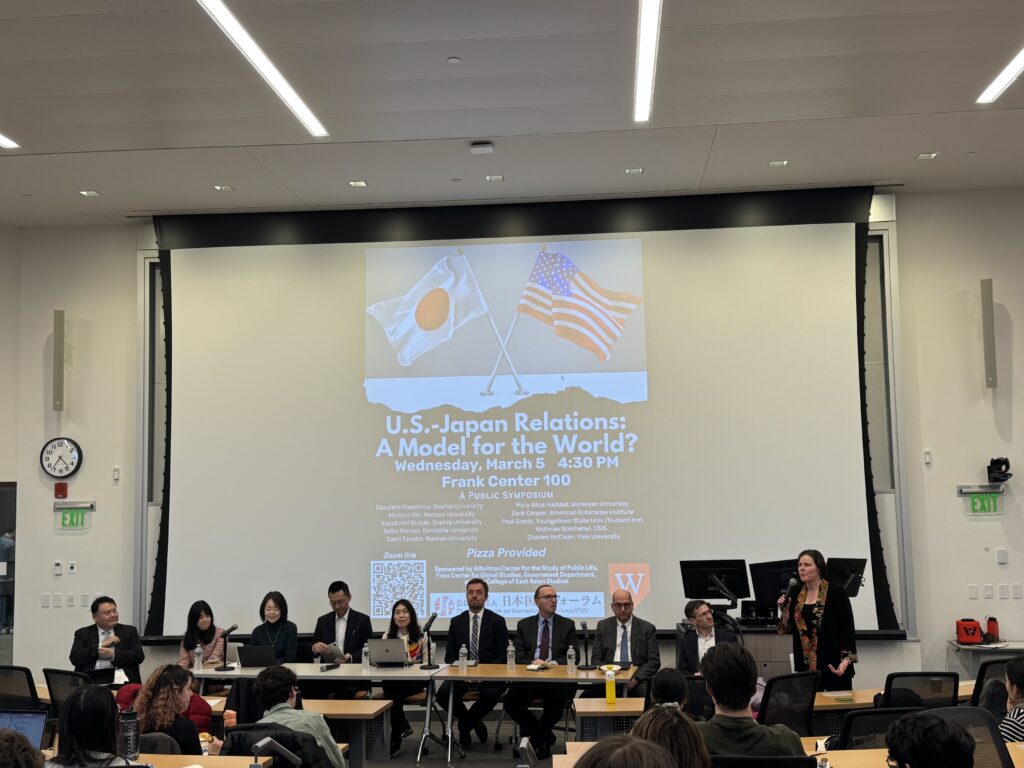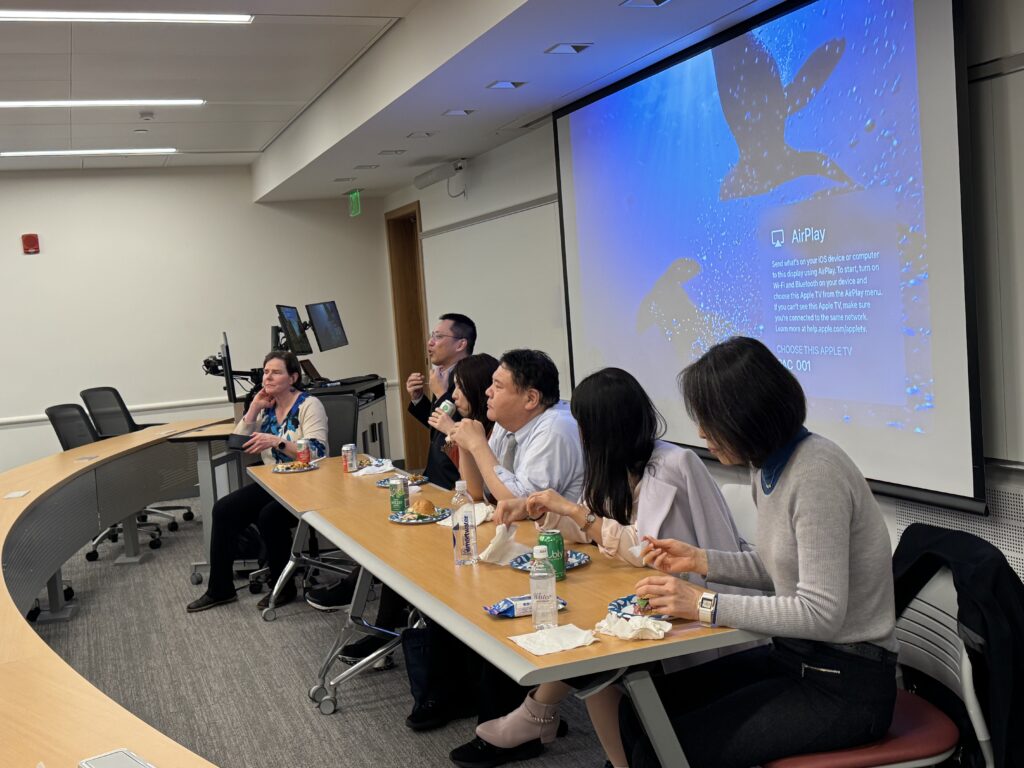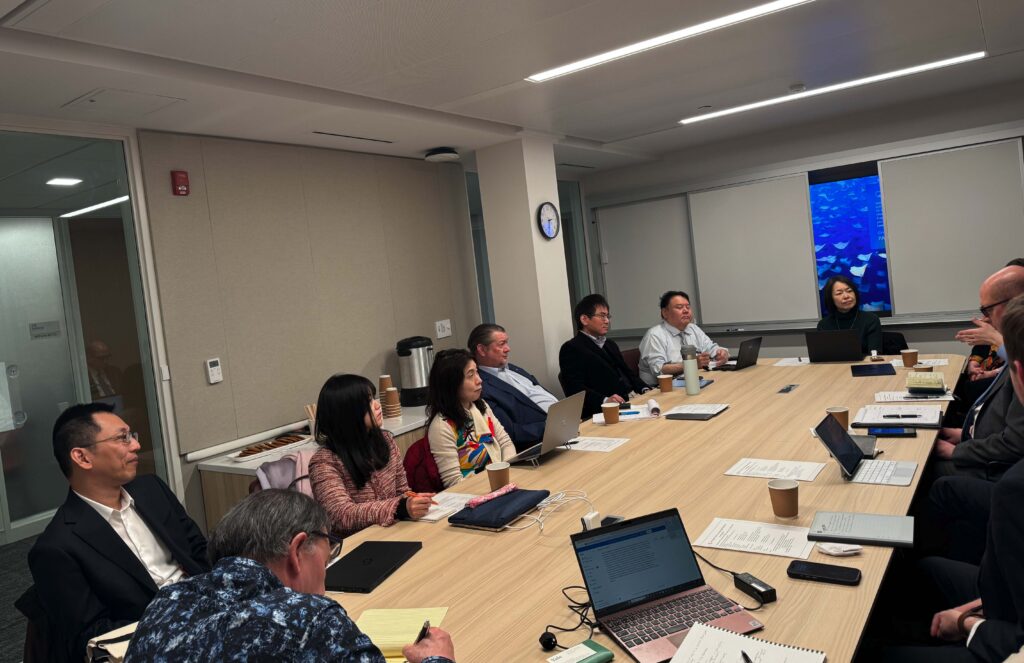by Zaynah Almasri
On March 5th and 6th, Wesleyan University proudly welcomed members of a binational U.S.-Japan study group focused on advancing non-military cooperation between the two nations. In light of shifting global dynamics—particularly China’s growing geopolitical and geo-economic influence—the symposium emphasized the increasing relevance of “soft” security. This includes collaborative efforts in areas like climate change, trade, human rights, immigration, and media.

The project, which has roots in previous dialogues organized by the Japan Forum on International Relations (JFIR), seeks to reimagine U.S.-Japan relations beyond traditional defense strategies. Wesleyan’s hosting of the event reflects both the university’s commitment to global engagement and its deepening academic connections to Japan.
The two-day event included two sets of closed-door meetings, one of which brought together Wesleyan professors Peter Rutland, Jim Greenwood, and Ryuichiro Izumi—each with long-standing ties to Japanese collaborators. In addition, two public-facing sessions enriched the broader campus community. The March 5 symposium, live streamed for broader public access, featured a cross-institutional panel including a guest scholar from Yale. On March 6, a more intimate colloquium gave students the opportunity to engage directly with project members, generating thoughtful dialogue and academic exchange. Several guests also visited a Wesleyan class, extending the reach of the collaboration into the classroom.

At the heart of these conversations was a recognition that the future of U.S.-Japan security cooperation must evolve to meet today’s global challenges. In her keynote commentary, Professor Mary Alice Haddad of Wesleyan emphasized the power of “sanpo yoshi”—a traditional Japanese concept meaning “three-way good”—to guide sustainable, mutually beneficial partnerships. Drawing on recent examples of corporate collaboration, Haddad highlighted how companies like Toyota and FedEx have adopted environmentally responsible practices that also yield economic and social benefits. For instance, Toyota’s “Environmental Challenge 2050” aims to deliver not just carbon neutrality, but a net-positive impact, through efforts like their EV battery plant in North Carolina and pollinator habitat restoration projects.
Such partnerships extend beyond the corporate realm. Haddad noted the growing role of universities and subnational governments in binational efforts. Examples like the “Smart Sister City” MOU between Lancaster, California and Namie, Japan—focused on hydrogen energy innovation—demonstrate how local initiatives can serve as scalable models for broader collaboration. These MOUs, often involving a network of private and public actors, are increasingly formalizing joint efforts in climate and economic security, helping communities on both sides of the Pacific flourish.
A core theme of the event was the durability and potential of these initiatives. Despite changes in national administrations in both Japan and the U.S., environmental cooperation has remained a resilient pillar of the relationship, largely because of the win-win outcomes these partnerships create. From Google’s solar investments in Japan to FedEx’s volunteer-led river cleanups, collaborative projects are producing measurable impacts that benefit people, the planet, and the bottom line.

Wesleyan’s role in convening this symposium underscores the university’s growing reputation as a hub for international dialogue. “We were honored to host such an important conversation about the future of the U.S.-Japan alliance,” said Professor Haddad. “It’s critical that we expand our understanding of security to include the environment, economy, and social wellbeing—and that we empower our students to be part of those conversations.” The March events mark a successful chapter in a larger, ongoing effort to forge a forward-looking, holistic alliance between the U.S. and Japan. As the world contends with complex, interconnected challenges, the kind of cooperation modeled at Wesleyan offers hope—and a blueprint—for global progress.


